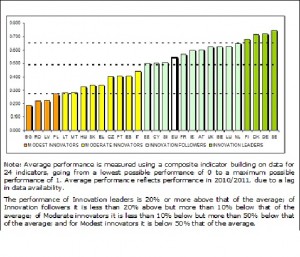A version of this post appeared on The Next Women on May 10, 2013. Here it is again.
A few years ago, Dutchwomen got a lot of flak for not working so much. Suddenly, the entire feminist bloc of the West knew that the Dutchwoman, if she worked at all, commonly worked part-time.
There was an article in Slate, where the journalist Jessica Olien presented her observations of apathetic Dutch attitudes towards work, especially among its women.Coming from her brief sojourn in the country as an expat, her examination seemed to propel a mini burst of commotion in the media.
A blog post on The Economist tried to further solidify the reasons for which the average Dutch female did not want to work so much in the 2000s. From citing lower salaries in the Netherlands as compared to the US to positing these women enjoyed the power of wielding their inconvenient part-time work schedules over their bosses’ heads, no explanation seemed to get at the core of the issue.
Not much longer after that, The New York Times laid the record straight with in-depth reporting. Dutchwomen (and Dutchmen, for that matter) simply valued working part-time for cultural reasons. The Dutchwoman’s role in working society gained certain notoriety in this short period of journalistic pontification. Women in The Netherlands were seen as lazy, laid back, and the antithesis of what the modern woman has been striving for since the twentieth century.
Many journalists pondered whether the Netherlands implemented any policies to increase women’s roles in the workforce. The truth is, as these journalists eventually reported, the Netherlands has been aggressively encouraging women to work since the 2000s, although positive results have been slow coming.
A 2001 tax incentive program increased female participation in the work force by 3.5 percent within eight years, but it simultaneously made part-time work seem more financially interesting than working full-time. Although the policy had a positive effect on female participation, it did not boost male/female equality in the workplace.
Amid the cultural and political explanations for why Dutchwomen outwardly fail their professional lives, one does not have to look far for examples of high-profile female decision makers in the Netherlands.
A quick perusal of LinkedIn showcases several successful women in Holland. With loyalty on her side, Judith Renders is on the uptick of a 15-year career at ING, the global financial company. According to her LinkedIn profile, Ms. Renders started out as a management trainee in 1998 and has held VP and director positions since 2008. Currently, she is Managing Director of Global Credit Restructuring. She is similar to other female high-performers who spend most or all of their careers at one company, like Ursula Burns, the CEO of Xerox. An attachment to one company breeds career advancement.
While sticking to one organization may lead to a key to the boardroom, progressing through diverse businesses and making a leap into the academic world might be the right path. Pauline van der Meer Mohr is now President of the Erasmus University Rotterdam, a position that she holds alongside non-executive directorship at DSM, the private Dutch chemicals company. Like Ms. Renders, she spent a long stretch at the beginning of her career at Shell, developing into executive roles. Variety proved to be a charm, as Ms. Van der Meer Mohr’s LinkedIn profile shows that she has held various top positions at giants TNT, ABN Amro and Shell before jumping into academia.
An aggressive immigration policy to attract highly educated professionals to the Netherlands does make the Dutch numbers of female executives look good. One expat, Alexandra Kahn, a consumer marketing director at Philips Netherlands, has held directorship positions at the company since 2007. Originally educated in France, she holds one of the top positions in the Netherlands. Her story is not singular. A 2012 study by the Dutch consulting firm Berenschot showed that the amount of female executives in AEX- and MidKap-listed companies increased by three percentage points since 2007. However, around 66 percent of these new women had come from outside of the Netherlands, as it was in the case of Ms. Kahn.
To say that the Dutch and their women do not care about their careers is false. The Emancipatiemonitor, or Emancipation Monitor, has been monitoring female equality in the workplace and academia since 2000. In addition, a nationwide initiative, Talent to the Top, currently develops tailored equality programs to both industrial and academic institutions. Active policies and monitoring do point to a nation that is interested in changing its direction.Quantitative metrics for gauging the success of women in the working world might give us a clue about the Netherlands’ value on their female workforce.
Certainly, the EU wants to push the 40 percent women-in the-boardroom quota onto the Netherlands. Refusing this directive may seem insensitive to onlookers. But the policies and successes that are playing out in Dutch industry and academia signal a bright future for the Dutchwoman.
Leave a Comment

